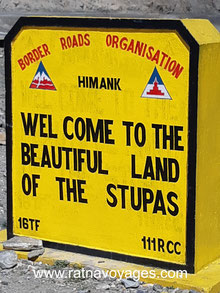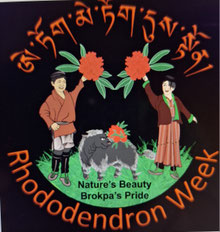LIKIR MONASTERY, SHAM VALLEY, LADAKH

|
NAME/NOM/ NAME/NOME |
LIKIR GOMPA LUKHEL GALDEN DARGASLING |
|
|
LOCATION/LIEU/ ORT/LUOGO |
Likir Village, 50Km from Leh | |
|
|
||
|
LINEAGE/TRADITION/ SCHULE/ORDINE |
Gelugpa | |
|
|
||
|
FOUNDED/FONDÉ/ GEGRÜNDET/FONDATO |
1065 | |
|
|
||
|
FOUNDER/FONDATEUR/ GRÜNDER/FONDATORE |
Duwang Chosje and Lhachen Gyalpo | |
|
|
||
|
PROTECTOR/PROTECTEUR/ SCHIRMHERR/PROTETTORE |
Palden Lhamo | |
|
|
||
|
SPIRITUAL HEAD/ MAÎTRE SPIRITUEL/ GEISTIGES OBERHAUPT/ CAPO SPIRITUALE |
Ngari Rinpoche | |
|
BRANCH/AFFILIÉ/ ZWEIG/AFFILIATO |
Rizong and Samstanling monasteries | |
| FESTIVAL | Dosmochey | |
| FESTIVAL 2024 | February 07,08 2024 |
LIKIR MONASTERY - Historical Background:
Likir Monastery, also known as Likir Gompa, is a prominent Buddhist monastery located in the Ladakh region of northern India. Here is a detailed history of Likir Monastery and the surrounding village
LIKIR MONASTERY - Foundation
Likir Monastery was founded in the 11th century by Lama Duwang Chosje under the command of the fifth king of Ladakh, Lhachen Gyalpo.
It belongs to the Gelugpa sect of Tibetan Buddhism and holds significance as one of Ladakh's earliest monasteries
LIKIR MONASTERY - Name Origin
The name "Likir" is derived from the Tibetan words "Lhik Gyal Gyi" which mean "The Naga - Encircled."
LIKIR MONASTERY - Spiritual Importance
Likir is known for its spiritual significance and is the seat of the head of the Gelugpa order in Ladakh.
LIKIR MONASTERY - Architectural Features
1. Main Temple (Dukhang):
- The main assembly hall of Likir Monastery, known as Dukhang, houses numerous statues of Buddha and other deities.
- The hall is adorned with thangkas, murals, and religious artifacts.
2. Maitreya Buddha Statue:
- The monastery is famous for its large gilded statue of Maitreya Buddha, a future Buddha, which stands prominently inside the Dukhang.
3. Dubung:
The Dubung is the central image in the Likir Gompa representing the guardian deity.
LIKIR MONASTERY - Cultural Significance
1. Festivals:
- Likir Monastery hosts various religious festivals, with the Likir Monastery Festival being a major annual event.
- During these festivals, monks perform traditional mask dances, rituals, and prayers.
2. Religious Studies:
- The monastery has been a center for religious studies, attracting scholars and practitioners from different parts of the world.
LIKIR MONASTERY - Historical Events
1. Wars and Conflicts:
- Likir, like many monasteries in Ladakh, faced challenges during invasions and wars in the region.
- However, it managed to survive and has played a role in the spiritual and cultural history of Ladakh.
LIKIR MONASTERY - Present Day
1. Preservation Efforts:
- Likir Monastery continues to be an active religious institution, and ongoing efforts are made to preserve its ancient structures and artifacts.
- It attracts a significant number of tourists and pilgrims.
2. Village Life:
The village of Likir, situated near the monastery, is known for its traditional Ladakhi architecture and agricultural practices.
LIKIR MONASTERY - Conclusion
Likir Monastery stands as a testament to Ladakh's rich religious and cultural heritage. Its ancient structures, religious artifacts, and the spiritual ambiance make it a significant site for both locals and visitors interested in Buddhism and history. The monastery continues to contribute to the religious and cultural tapestry of Ladakh.































